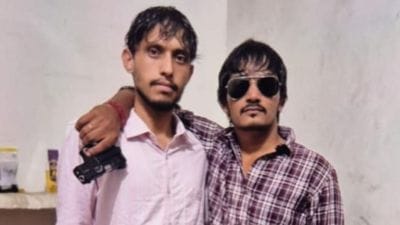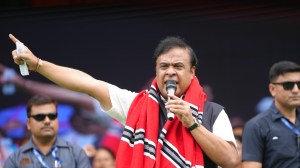The Congress had made the mistakes first
In ‘Whose mistakes are these?’(IE, August 20), Mani Shankar Aiyar has tried to lampoon the prime minister for requesting the Kashm...

In ‘Whose mistakes are these?’(IE, August 20), Mani Shankar Aiyar has tried to lampoon the prime minister for requesting the Kashmiris to ‘forget the mistakes of the past’. Aiyar wants to know what exactly are these mistakes and then states: ‘‘Or does the mistake lie in 1987 — when Farooq Abdullah left the Vajpayee/Fernandes lobby quite distraught by tying up with Rajiv Gandhi? In which case, Vajpayee must answer the question Rajiv Gandhi put to the BJP-sponsored governor of J&K: how many seats did Jagmohan think were rigged in the J&K elections of 1987? Sixteen, replied the governor. Well, even if all 16 were countermanded, the NC/Congress would still have had huge majority, replied Rajiv.’’
A big intellectual like Aiyar should know the basic principle of law, that the injury is independent of the damage, was established internationally in the Ashby vs White case. It so happened that Ashby went to cast his vote in a general election but was told that his vote had already been cast. Ashby went to the court. Although he admitted that his candidate had already been elected, the court ruled that the injury had been caused notwithstanding the fact that there was no damage. Adducing such arguments that NC/Congress still had a huge majority only adds insult to injury. Vajpayee had the magnanimity to acknowledge the mistake without blaming his political adversaries.
In this context, we need to go back to the 1983 elections. The first after the death of Sheikh Abdullah, it witnessed a sort of polarisation between the two regions of the state. The Congress won most of the seats in Jammu while the NC swept the Valley. Emboldened by this success, Farooq Abdullah decided to play the role of opposition to the Congress and organised a conclave of opposition leaders in Srinagar on the issue of centre-state relations in October 1983. Delhi wanted to teach him a lesson for this and replaced him with his brother-in-law, G.M. Shah. Governor B.K. Nehru’s advice not to dislodge Farooq was turned down by Indira Gandhi. Nehru was transferred to Gujarat and Jagmohan succeeded him in 1984.
Refusing to read the writing on the wall, Farooq went ahead with anti-Congress activities. Soon 13 MLAs sent a letter to the governor informing him that they had withdrawn their support to the Farooq government. On July 2, 1984, Governor Jagmohan asked him to resign on the ground that he had lost the confidence of the majority. Farooq demanded that he be given a chance to prove his majority on the floor of the House but it was denied. He was dismissed and G.M. Shah was installed as the new CM. Later it too had to be dismissed and President’s rule imposed. Farooq then had an accord with New Delhi and he came back to power as head of a Congress-NC government. Pro-India forces got another body blow with this accord.
Then came the 1987 elections when Farooq became the Congress’s blue-eyed boy. The opposition parties came together as the Muslim United Front. It gave a tough fight to the NC but Delhi ensured NC’s victory. The most oft-quoted example of rigging is the defeat of Syed Salahuddin from Amira at the hands of Ghulam Mouddin Shah of the NC. He was won over by Pakistan where he floated the Hizb-ul-Mujahideen and is its chief now. Once again the question mark on the fairness of the 1987 elections sent out a wrong signal.
Photos





- 01
- 02
- 03
- 04
- 05


























